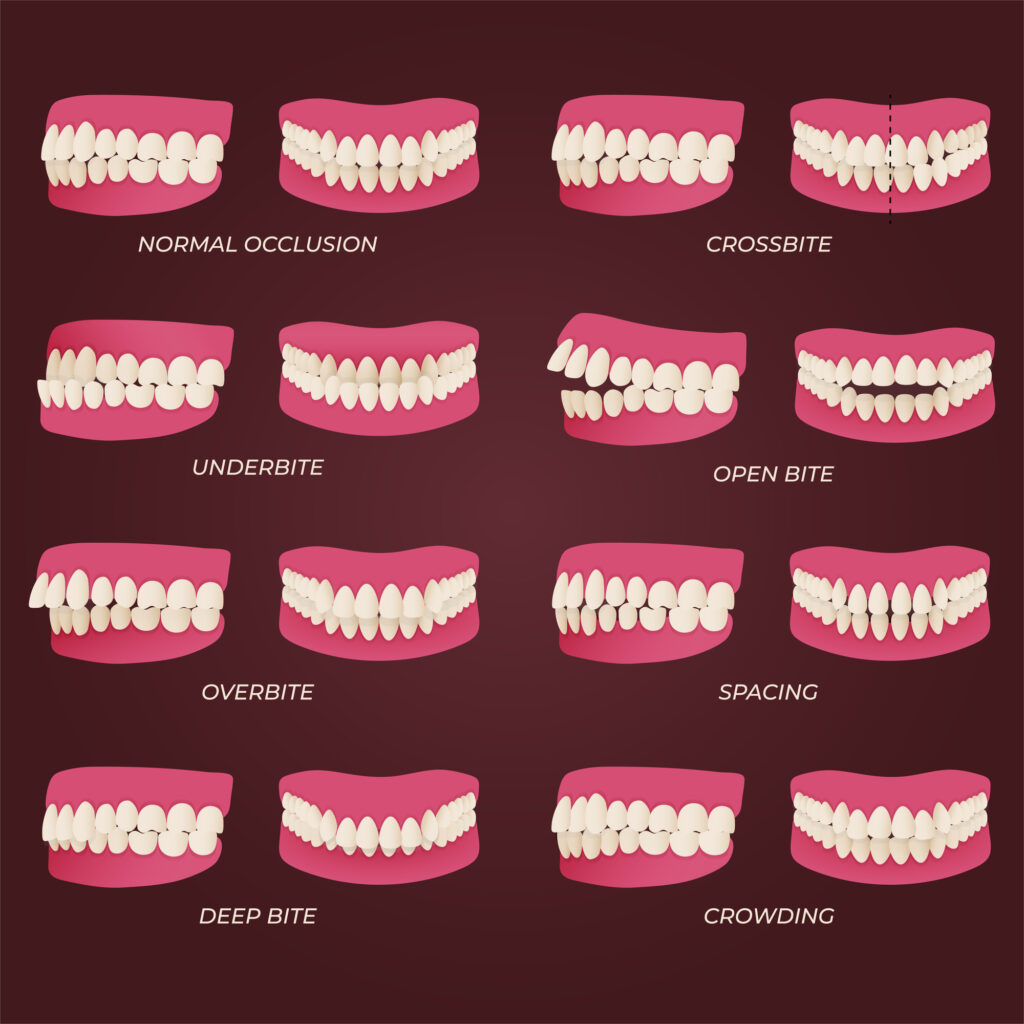
Malocclusion is the technical term for misalignment of the teeth and/or jaw. It affects not only the aesthetics of your smile but also can impact your oral health. In orthodontics, identifying the specific type of malocclusion is the first step toward effective treatment.
Malocclusion Types
There are several different classes of malocclusion. Let’s learn about the various types of malocclusions to help you understand common alignment issues and their implications.
Class I Malocclusion
Class I malocclusion is the most prevalent type, where the bite is normal, but there’s crowding or spacing issues in the teeth.
Crowding occurs when there isn’t enough space in the mouth to accommodate all of the teeth. Crowding can complicate oral hygiene efforts, increasing the risk of gum disease and tooth decay.
Conversely, excessive space between teeth can also pose dental health risks, including gum problems and potential tooth shifting.
This type of malocclusion can manifest as slightly crooked teeth or as more noticeable overlaps. Despite the normal bite, individuals with Class I malocclusion may still experience uneven wear on their teeth and difficulty in cleaning certain areas, leading to a greater risk for getting cavities and gum disease.
Class II Malocclusion or Overbite
An overbite happens when the upper teeth and jaw significantly overlap the lower. This can be further categorized into two divisions:
Division 1: The upper teeth are not only ahead but also protrude outward, giving a more prominent “buck teeth” appearance.
Division 2: The upper teeth tilt inward, creating a deep vertical overlap between the upper and lower front teeth, sometimes causing the lower teeth to bite into the palate. This is also known as a “deep bite.”
An overbite can lead to difficulties in chewing and speaking and might contribute to TMJ disorders due to the misalignment of the jaw.
Class III Malocclusion or Underbite
An underbite features a more pronounced lower jaw, with lower teeth that overlap the upper teeth. This type of malocclusion can strain both the jaw and facial muscles, potentially leading to jaw pain and increased tooth wear. It might also affect facial aesthetics, contributing to a more pronounced chin.
Crossbite
Instead for a forward to backward misalignment, a crossbite affects side to side alignment. In other words, it occurs when upper teeth sit inside the corresponding lower teeth when the mouth is closed. It can be unilateral (affecting one side of the mouth) or bilateral (affecting both sides). This misalignment can lead to asymmetric jaw growth, abnormal tooth wear, and increased gum disease risk.
Open Bite
An open bite describes a situation where some of the upper and lower teeth do not touch when the mouth is fully closed, creating a space between teeth. This type can be either anterior, affecting the front teeth, or posterior, impacting the back teeth.
Open bites can be caused by habits such as thumb sucking or tongue thrusting and can complicate biting and speech.
Overjet
Often confused with an overbite, an overjet is characterized by the horizontal projection of upper teeth over the lower teeth. An excessive overjet can make the front teeth more susceptible to damage and wear.
Malocclusion Treatments
Recognizing the type of malocclusion you or your loved ones may have is step one in achieving a healthier, more attractive smile. Each type of malocclusion presents unique challenges and requires specialized treatment strategies. However, most can be effectively treated with orthodontic treatments such as braces or aligners.
At Thomas Orthodontics, we are dedicated to providing tailored orthodontic solutions that meet your unique, individual needs. Don’t hesitate to reach out and book your appointment today. We can evaluate your specific alignment issues and create a treatment plan designed to realize your perfect smile.





